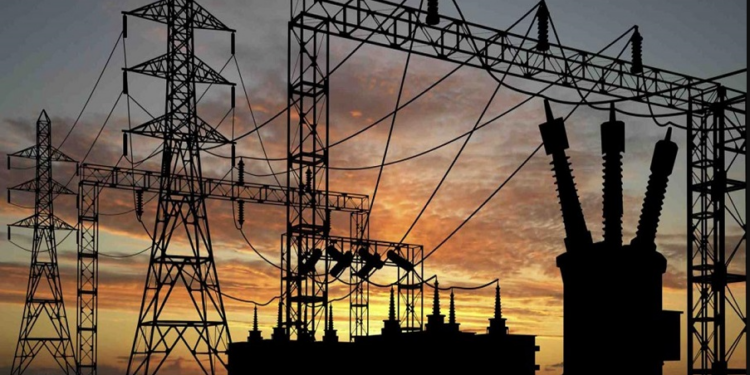The Power Consumer Assistance Fund (PCAF) established under the repealed Electric Power Sector Reform Act, of 2005 is yet to be operational after 19 (Nineteen) years.
The PCAF was created pursuant to section 122 of the Electricity Act to subsidize underprivileged consumers as may be specified by the Minister and will be funded by contributions from eligible customers and consumers, as well as subsidies received by the FGN as appropriated by the National Assembly.
Funds in the PCAF will be managed and disbursed by NERC in accordance with policy directions issued by the Minister.
Here are factors to consider in setting up the framework
1. Implementing a Cost Reflective Tariff and an Efficient Tariff Methodology:
Implementing a cost reflective tariff is vital for DISCOs to cover their costs and secure returns on investments. Section 116 of the Electricity Act outlines principles for NERC to regulate tariffs efficiently. NERC must consider subsidies, including those from the PCAF, when establishing tariff methodologies.
News continues after this ad
This approach enables DISCOs to enhance infrastructure, reduce losses, improve services, and attract investment. Moreover, it eliminates the need for ad-hoc government funding to cover tariff shortfalls.
The Act mandates that any government subsidies align with the PCAF to prevent speculation on revenues by licensees. Whether the government will adhere to this provision remains uncertain, especially given recent tariff freezes and subsidy announcements.
2. Funding of the PCAF
As provided by the EA, the PCAF is to be funded by contributions from consumers and Eligible Customers. It is proposed that the designated consumers who will be obligated to pay contributions to the PCAF should fall within the Tariff band A – C at a reducing percentage based on their respective tariff class.
This is hinged on the fact that consumers within band A- C are middle class to upper class in the society and will arguably have the capacity to pay the additional sum. The consistency in remitting contributions by DisCOs is critical to maintaining the liquidity of the PCAF.
3. Eligibility Criteria for the PCAF
It is proposed that the eligibility to benefit from the PCAF will be based on three main criteria which must be met simultaneously:
- Poverty Level
- Power Consumption Level
- Geographic Location
Poverty Level
Beneficiaries earning N50,000 or less monthly (or a set threshold) or annual income of N600,000 or less qualify. Financial verification includes BVN, TIN, and payroll slips. The PCAF coordinates with tax authorities for verification, applicable to SMEs, who fall mainly between the R2 tariff class, band d and e to be more specific. Periodic income checks ensure eligibility.
Subsidies increase with lower incomes. Exceeding the threshold removes applicants. This incentivizes tax registration, expanding the tax base. TIN verifies income submitted to tax authorities. This mirrors Ontario’s subsidy program, but lacks household size verification due to data constraints in Nigeria.
This model resembles Ontario’s Ontario Electricity Support Programme (OESP) but lacks household size verification due to data limitations in Nigeria
- Power Consumption Level
It is proposed that the subsidy under the PCAF will only be granted to applicants whose premises consume not more than an average of 50KVA i.e 50kwh. This implies that DISCOs will work with the administrators of the PCAF to confirm the energy consumption of applicants before taking benefit from the subsidy scheme.
Where a beneficiary exceeds the consumption threshold in a month, he/she will not take benefit of the PCAF for that month but will remain a registered beneficiary of the scheme. Further, a beneficiary that exceeds consumption for a consecutive period of 6 months will be taken off the scheme.
- Geographic Location
Certain locations around the country shall be exempted from benefiting from the subsidy. This is to ensure that the subsidy is targeted to the right beneficiaries.
These are areas popularly known to be occupied by the rich and wealthy Nigerians. For instance, Banana Island, in Lagos, Wuse in Abuja amongst others.
Notwithstanding that an application meets the criteria of income level and power consumption, subsidy will not be granted if an applicant is resident within a geographical area regarded as “High Brow”. This is to ensure that the subsidy is targeted to the right beneficiaries. A list of areas regarded as “High Brow” will be developed to guide applicants.
4. Metering:
To properly target and monitor the administration of the PCAF, applicants must be metered. With meters, DISCOs can provide administrators of the PCAF with relevant information to verify the power consumption level of each applicant per hour.
5. Subsidy in Crisis or Emergency Situations
Funds from the PCAF can be used to subsidize electricity provided to crisis ravaged areas, Internally Displaced Persons (IDP) camps for a fixed period.
It is useful to note that subsidy schemes can be crafted as policy responses to energy crises or similar situations to support the general or a class of the citizenry.
For instance, in the United Kingdom, during the 2022 energy crisis, the government introduced some specific schemes such as the Energy Bill Relief Scheme where the government provides financial assistance on energy bills to all eligible non-domestic customers, including businesses, charities, and public sector organisations and this was in the form of an energy price guarantee which puts a cap on the potential energy cost of a household with a duration of 2 years after 2022 at £2,500.
6. Payment mechanism under the PCAF
It is proposed that the payment mechanism under the PCAF will operate either as cash pay-outs to qualifying applicants or by disbursement to relevant DisCos.
Where cash- pay-outs is adopted, it will be only available to applicants, who are metered, are within the income threshold, passed the geographical location test and within the consumption threshold. Such applicants shall be paid a monthly cash sum in the value of the subsidy applicable to their cadre.
Payments will only be made for months in which the criteria are met. Where consumption level exceeds threshold, there will be no cash payments.
Where the disbursement to DISCOs is adopted, DISCO shall present a bill representing the applicable subsidy and the number of customers to which it relates for settlement. PCAF administration shall verify the bill, the applicable hours of supply and other relevant documentation before payments are made.
7. Duration of the PCAF
Every subsidy regime should have some predetermined threshold or plan for phasing out. Absence of such phase out plans, can lead to a permanent fiscal burden for the government that is incommensurate with the benefits obtained from the subsidies.
With the implementation of a fully cost reflective tariff, the DISCOs are better positioned to improve their network, more investment will flow in, liquidity is enhanced, and this will ultimately lead to better service delivery, improved supply of power and consequent boost of economic activities.
With an improved economy, it is expected that the beneficiaries will naturally exceed the income level threshold and will be off the scheme in the course of time.
In the same vein, beneficiaries will have more funds to buy more appliances or machineries and their power consumption would have increased to take them out of the subsidy threshold. The PCAF subsidy will eventually phase off when there are no more persons that fall within the eligibility bracket.
8. Administrative Requirements For The Implementation Of The PCAF
On the administration of the PCAF, it is proposed that an independent board of trustees be appointed to manage the affairs of the Fund to promote transparency and accountability. Other administrative requirements include a digital platform to process applications, manpower to carry out verifications amongst others, a complaints section/administrative panel to handle complaints and physical offices at strategic locations across the country.
Potential Risks Points in the Implementation of the PCAF and Mitigation Mechanism
- As it is with every developmental project, the implementation of the PCAF is not without risks. However, notwithstanding the underlisted risks, several measures can be taken to mitigate them for the efficient operation of the PCAF.
- Public outcry on the full implementation of cost reflective tariff. This can be mitigated by phased application of the cost reflective tariff and an aggressive campaign to enlighten the public on the need to implement the tariff regime and set up the PCAF.
- Errors of exclusion (poor not receiving benefits) and inclusion (rich receiving benefits). A mitigation mechanism can include digitalization of the application process and proper/transparent verification process.
- Administrative Cost- Notwithstanding the attendant administrative cost, the operation of the PCAF is a cheaper and a more purposeful option compared to the existing regime of paying for tariff shortfalls.
- Political Will- The bane of the challenges faced by the power sector has been the lack of political will by the government of the day to take bold and drastic decisions/ actions to address deep seated issues. A strong policy drive by the government backed by effective implementation will hedge against this risk.
- Targeting Risks/ Inadequate and Inaccurate Data- This can be mitigated by the ensuring mass metering of all electricity consumers. Metering will reduce collection losses, improve collation of data on electricity consumers.
As the Nigerian electricity sector gradually evolves into a competitive electricity market, the role of the PCAF cannot be overemphasized. The immediate implementation of the proposed framework will not only reduce the heavy burden of paying tariff shortfalls on the Government but will also address the financial sustainability of the NESI by providing subsidies to assist the underprivileged consumers who cannot afford the cost reflective electricity tariff.
For more related News like this visit www.blog.light.ng.
Source: Nairametrics.com.






